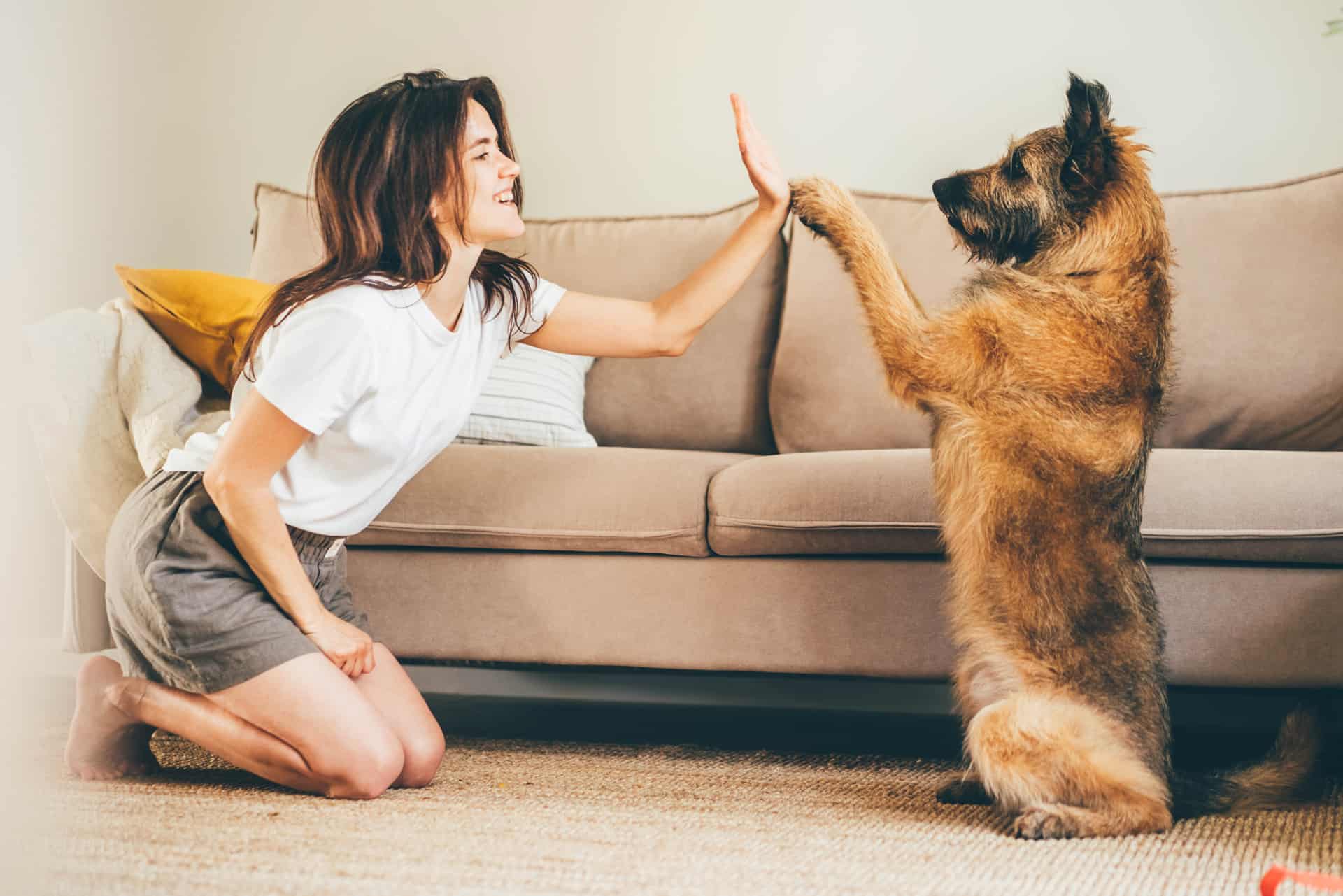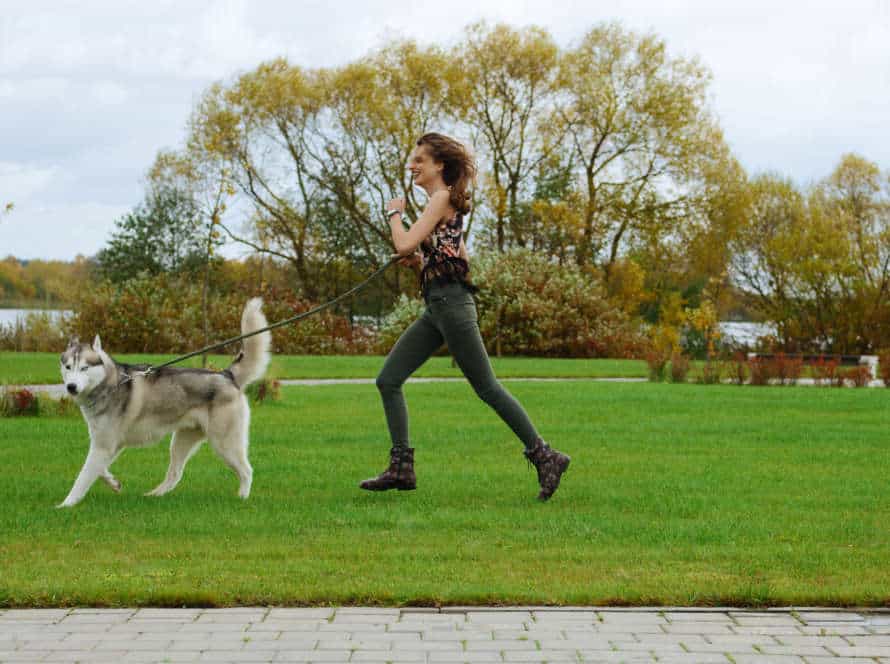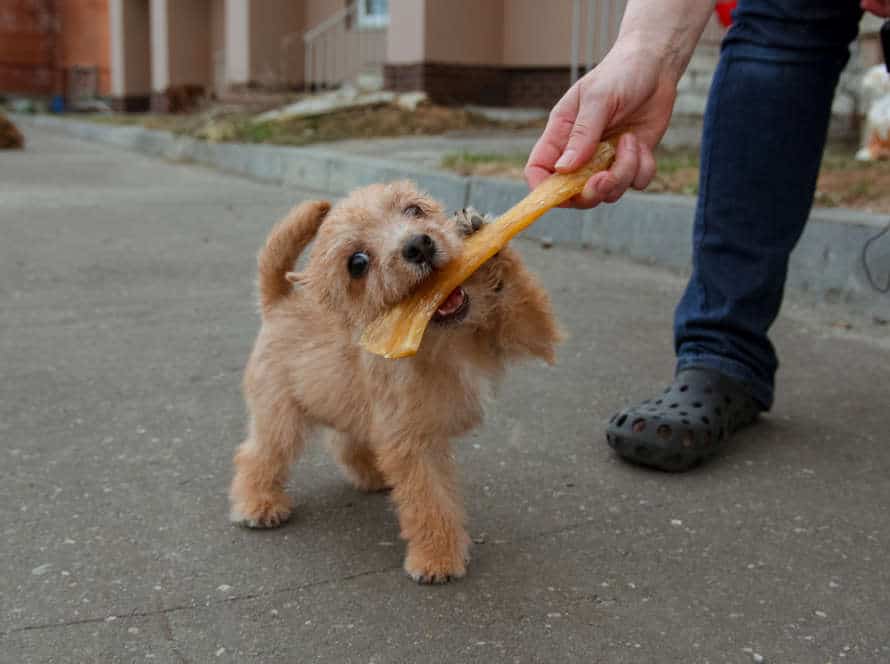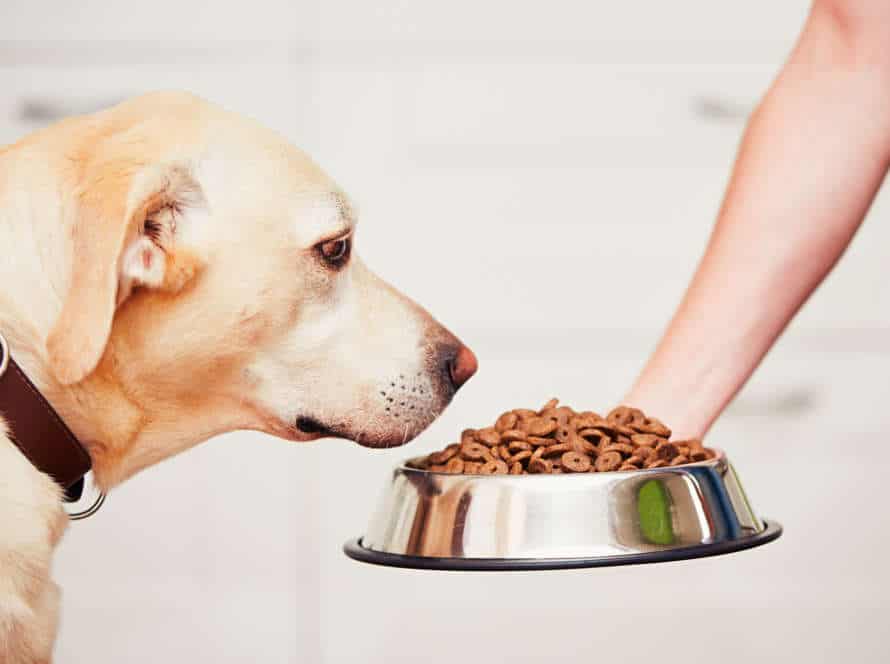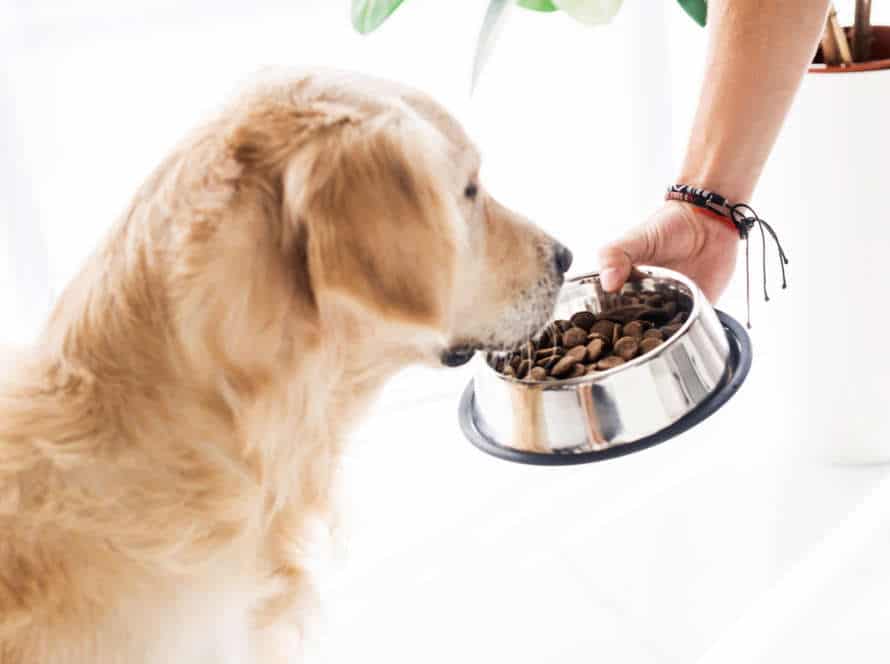The Power of Positive Reinforcement for Senior Dog Training
Positive reinforcement is a great way to train your senior pooch. With the tips below, you can strengthen your bond and encourage good behavior.
- Give treats, praise and cuddles when your senior dog does something good like sitting on command, or going potty in the right spot.
- Stay consistent with your training and reward your pup straight away.
- Use a clicker to mark and reinforce positive behavior and slowly reduce the treats as your senior pup gets better.
- Don’t use punishment or negative reinforcement – it’s bad for your pet and your connection.
Positive reinforcement training helps your furry friend stay happy and healthy!
Why Positive Reinforcement is Important for Senior Dogs
Senior dogs need training. Positive reinforcement is key! It encourages the pup’s hard work, and research has shown it works. When training older dogs it’s essential to use this method. Let’s explore why positive reinforcement is so important for senior dogs.
Understanding Senior Dog Behavior
As dogs age, their behavior may change–so it’s essential to understand senior dog behavior for adequate care. Positive reinforcement is key for training older pups. It keeps things exciting and helps them stay sharp. Rewards can come in many forms, like treats, praise, and affection. When they link good behavior to positive rewards, they’re more likely to repeat it.
On the flip side, negative reinforcement and punishment can hurt their mental and emotional health, causing issues like anxiety, depression, and aggression. Senior dogs require extra patience and consistency when it comes to training.
Pro tip: Positive reinforcement not only boosts their well-being, but also strengthens the bond between the dog and its owner.
Benefits of Positive Reinforcement Training
Positive reinforcement training is a kind and effective way to train senior dogs. It has many benefits, like:
- Building trust – Praise, treats, and affection reward good behavior, making dogs more comfortable with people.
- Boosting confidence – Positive reinforcement helps senior dogs, who may be struggling with physical or cognitive decline, increase their self-esteem.
- Reducing stress – Reprimanding or punishing a dog creates anxiety, but positive reinforcement training creates a calm environment.
- Creating a positive association – Treats and verbal praise reward good behavior, forming a positive link with training.
- Producing long-lasting results – This type of training leads to lasting results and lowers the chance of aggressive or reactive behavior.
Remember, positive reinforcement requires patience, consistency, and respect for your senior dog’s capabilities.
Risks of Traditional or Punishment-Based Training
Punishment-based training can be damaging for senior dogs. It can cause physical and mental stress, leading to depression, fear, and even aggression. Plus, it’s not recommended for dogs with health or mobility issues.
Positive reinforcement is a much better option. Instead of punishing bad behaviour, reward good behaviour with treats, toys, or praise. Your dog will quickly learn to repeat the wanted behaviour.
Pro tip: When training seniors, be patient and consistent. Make sure rewards are immediate and consistent. Celebrate each success (big or small) and adjust the training to your dog’s needs and abilities.
Positive Reinforcement Techniques for Senior Dogs
Positive reinforcement training: success and safety guaranteed! This type of training rewards desired behaviors and ignores undesired ones. For senior dogs, training is a must! It’s essential for their safety, health and happiness.
Let’s explore the different positive reinforcement techniques for training seniors.
Clicker Training for Senior Dogs
Clicker training is an amazing way to use positive reinforcement with your senior pup. Instead of punishing bad behaviour, you can reward good behaviour! Here are some tips for clicker training your senior pup:
- Use yummy treats like cooked chicken or cheese to motivate them during training.
- Click the clicker when they perform a desired behaviour, then give them a treat.
- Repeat this until they understand the clicker means they get a reward.
- Once they know this, introduce commands like ‘sit‘ or ‘stay‘, and reward them when they follow.
- Don’t forget to keep the training sessions short and fun! Don’t tire out your senior pup.
Treat-Based Training Methods for Senior Dogs
Positive reinforcement is a great training method for older dogs. It focuses on rewarding good behaviour, instead of punishing mistakes. Here are some techniques to try:
- Treat/food reward: Give your pup a tasty treat when they do something you want, like sitting or staying. This will help them remember the good behaviour.
- Verbal praise: Speak kindly and happily to your pooch when they do something right. This will tell them they’re on the right track.
- Toys and play: Use toys and play to bond with your pup and reward good behaviour. Playing with toys acts as an extra reward.
Pro-tip: Incorporate positive reinforcement into training. This will help train your dog without causing stress. Plus, your pup will be happy and healthy!
Reward-Based Training for Senior Dogs
Reward-based training is great for senior pups! Try these tips:
- Give your pup their favorite treats or toys for good behavior. It will help them love training time.
- Use a clicker to mark when they do something great. It tells them a reward is coming.
- Keep training short and often. They need to stay interested.
- Don’t use punishment. It’s too stressful and confusing.
- Be patient and consistent. Reward-based training can make a huge difference in your senior pup’s health.
Tailoring Positive Reinforcement Training to Senior Dogs
Positive reinforcement works well for training senior dogs. Reward wanted behaviors with treats and verbal cues. This helps build a connection between the owner and their elderly pup. For great results, use positive reinforcement that’s tailored to the dog’s needs. Here are some tips on how to do this:
Adjusting the Training Pace for Senior Dogs
Senior pooches need a different strategy when training them. Adjusting the speed is super important. You need to make sure that your dog can learn commands without any risk of physical harm.
Tailor positive reinforcement training to your senior dog by making attainable goals and breaking the training down into smaller portions. Repetition is a must and treats and praises are great motivators.
Here are some tips:
- Shorten sessions (5-10 minutes)
- Use high-value treats and praises
- Train in a peaceful atmosphere
- Utilize voice commands with hand signals
- Be persistent and patient. Allow your senior pup time to comprehend and follow commands.
Pro tip: Talk to your vet before starting to train your older pup. They may have particular needs or limits due to age and health.
Accommodating Senior Dog’s Physical Limitations
As dogs age, they may be limited physically. Training senior dogs with such limitations requires a special approach. Here are some tips to help:
- Keep training sessions short and let them rest in-between.
- Choose exercises that don’t cause pain, like walking or swimming.
- Use treats, praise and gentle touches to motivate and reward them.
- Adapt your training according to the dog’s ability and pace.
By using positive reinforcement, senior dogs can live happier and more comfortable lives, whilst keeping their mental and physical abilities.
Mental & Physical Exercise for Senior Dogs
It’s key for senior dogs to get both physical and mental exercise for optimal health and well-being. Positive reinforcement training can help customize exercises to their needs. Older pups need more rest but can still benefit from regular, low-impact exercise. Mental stimulation is also essential to help prevent cognitive decline. Here are some great tips:
- Use positive reinforcement to learn new commands, behaviors, and tricks.
- Engage in puzzle games like treat-dispensing toys or hide-and-seek.
- Go for short walks and gentle fetch games to keep physical health up.
- Remember to tailor routines to individual abilities and always consult the vet.
Addressing Common Senior Dog Behavior Issues through Positive Reinforcement
Training your elderly pup can be intimidating. Yet using positive reinforcement can be really useful and cause lasting changes in behaviour.
Positive reinforcement is a way of teaching doggos which includes rewarding behaviours you want with treats, compliments, and other positive reinforcement. It’s a kind, humane, and successful approach to dealing with typical problems in senior dogs. In this article, we’ll discuss how to use positive reinforcement to successfully handle typical issues seen in elderly pups.
Separation Anxiety in Senior Dogs
Senior dogs can suffer from separation anxiety. To address this, use positive reinforcement. This means rewarding good behavior instead of punishing bad behavior. Here are some tips:
- Start leaving them alone for short times and gradually increase duration.
- Give them something special like a treat or toy while you’re away.
- Speak calmly and positively when you leave and return.
- Consider hiring a pro dog trainer who uses positive reinforcement.
Remember: Positive reinforcement is an effective training tool. Be consistent and patient, and don’t forget to celebrate successes!
Annoying, Destructive, or Aggressive Behaviors in Senior Dogs
Positive reinforcement training is a great way to manage troublesome behaviors seen in senior dogs, such as destruction, aggression, and being a nuisance. It can encourage good behavior and help to stop bad habits, while punishing your pooch could make matters worse and damage your relationship.
Here are some tips to help you use positive reinforcement to address certain issues with your older pup:
- Have a consistent daily routine to make your senior dog feel safe.
- Praise, treats, or toys should be given immediately to reward good behavior.
- Replace unwanted habits like chewing or digging with acceptable activities, like providing alternative playthings.
- Use devices, like pheromone collars or weighted blankets, to calm your canine’s anxiety or stress.
- If needed, seek professional help from a dog trainer or vet behaviorist.
Positive reinforcement training is an effective way to handle behavioral problems in senior dogs. It strengthens your bond with your pup and provides a kinder, more understanding approach to teaching them.
Handling Physical or Health Limitations in Senior Dogs while Training
As time passes, our furkids age and may have physical and health constraints, making training more difficult. Yet, positive reinforcement is a great way to address usual senior pup behavior issues, and take into consideration their limitations.
Here are some tips:
- Keep training sessions quick and regular, so as not to tire or overwhelm them.
- Use treats and compliments to reward them for good behavior and boost their self-confidence.
- Remain patient, consistent, and upbeat during the training process.
- Adapt the routine to your pup’s physical and health limitations. For example, if they have mobility issues, try training them while they’re sitting or lying down.
Remember, it’s never too late to begin training a senior pup! With a bit of patience, consistency, and originality, you can help them continue learning and growing.
Choosing a Positive Reinforcement Dog Trainer for Senior Dogs
Positive reinforcement is key for training your senior pup. A positive reinforcement-based dog trainer will reward desired behavior and connect it with rewards. That way, you can teach new behaviors to your senior pup in an enjoyable and respectful manner. Here are some tips to help you choose a positive reinforcement-based dog trainer:
Evaluating Dog Trainer Qualifications and Experience
When choosing a dog trainer for your senior pup, it’s important to be mindful of qualifications and experience. Go for a positive reinforcement trainer who knows the needs of older dogs. This type of training rewards good behavior and encourages learning. Here’s what to look for:
- Formal education or certification in dog training.
- Expertise and training philosophy in working with senior dogs.
- References and testimonials from past clients, particularly those with senior dogs.
- Skill with senior dogs, like effective handling and communication.
- A personable, patient trainer who loves dogs.
- Commitment to positive reinforcement techniques to keep senior dogs active, healthy and happy.
An experienced trainer is an investment in your pup’s well-being and joy.
Assessing the Dog Trainer’s Training Approaches
When selecting a dog trainer for your senior canine, it is vital to assess their training methods. Make sure they follow your beliefs and objectives for training.
Search for trainers who use positive reinforcement techniques instead of punishment-based ones. Positive reinforcement involves praising, rewarding, and offering treats to induce desirable actions, while punishment-based tactics include aversive measures such as shock collars or physical corrections.
To evaluate a dog trainer’s approach, consider these questions:
- What training methods do they use?
- Do they use positive reinforcement or punishment-based approaches?
- How do they handle unwanted behaviors?
- Can they present references from clients with senior dogs?
By choosing a positive reinforcement dog trainer, you can ensure your senior dog enjoys a gentle, stress-free and effective training experience.
Referrals and Recommendations for Positive Reinforcement Senior Dog Trainers
Positive reinforcement training for senior dogs can help them stay healthy and active. Here are some recommended trainers for this type of training:
- Victoria Stilwell: She is a well-known dog trainer, writer, and TV star. Her methods focus on rewards-based training to increase obedience and reduce fear in older dogs.
- Zac George: He’s a famous dog trainer with an emphasis on positive reinforcement and reward-based methods for elderly pups. His strategies are humane and straightforward.
- Karen Pryor: She’s a pioneer in positive reinforcement training and wrote “Don’t Shoot the Dog!” Her methods use rewards and positive reinforcement to train all aged dogs, including seniors.
Positive reinforcement in senior dog training is very important. It’s a humane, enjoyable, and effective way to help your older pup learn new tricks and stay happy. Ask other senior dog owners or your vet for referrals and recommendations when looking for a positive reinforcement dog trainer.
Frequently Asked Questions
1. What is positive reinforcement training for senior dogs?
Positive reinforcement training is a kind of dog training that uses rewards to encourage good behavior and discourage bad behavior. It’s based on the idea that dogs will repeat behaviors that are rewarded, and avoid behaviors that don’t earn them any rewards.
2. How does positive reinforcement training benefit senior dogs?
Positive reinforcement training is a highly effective way to train senior dogs. It helps them to learn new behaviors and commands, and reinforces good behavior. It also helps to build positive relationships between dogs and their owners, which is especially important for senior dogs who may be dealing with health issues or other challenges.
3. What kind of rewards can be used for positive reinforcement training?
Rewards for positive reinforcement training can include treats, praise, and playtime. It’s important to choose rewards that your senior dog finds motivating, and to use them consistently and fairly throughout the training process.
4. Can positive reinforcement training be used to address behavioral problems in senior dogs?
Yes, positive reinforcement training can be used to address a wide range of behavioral problems in senior dogs, including barking, jumping, and chewing. However, it’s important to work with an experienced trainer or behaviorist to develop a training plan that’s appropriate for your senior dog’s specific needs and challenges.
5. How long does it take to see results from positive reinforcement training?
The results of positive reinforcement training can vary depending on the individual dog and the specific behaviors being addressed. However, in most cases, pet owners can expect to see results within a few weeks if they are consistent and patient with the training process.
6. Can positive reinforcement training be used in conjunction with other training methods?
Yes, positive reinforcement training can be used in conjunction with other training methods, such as leash training or crate training. This can create a comprehensive training plan that addresses all aspects of your senior dog’s behavior and needs.

